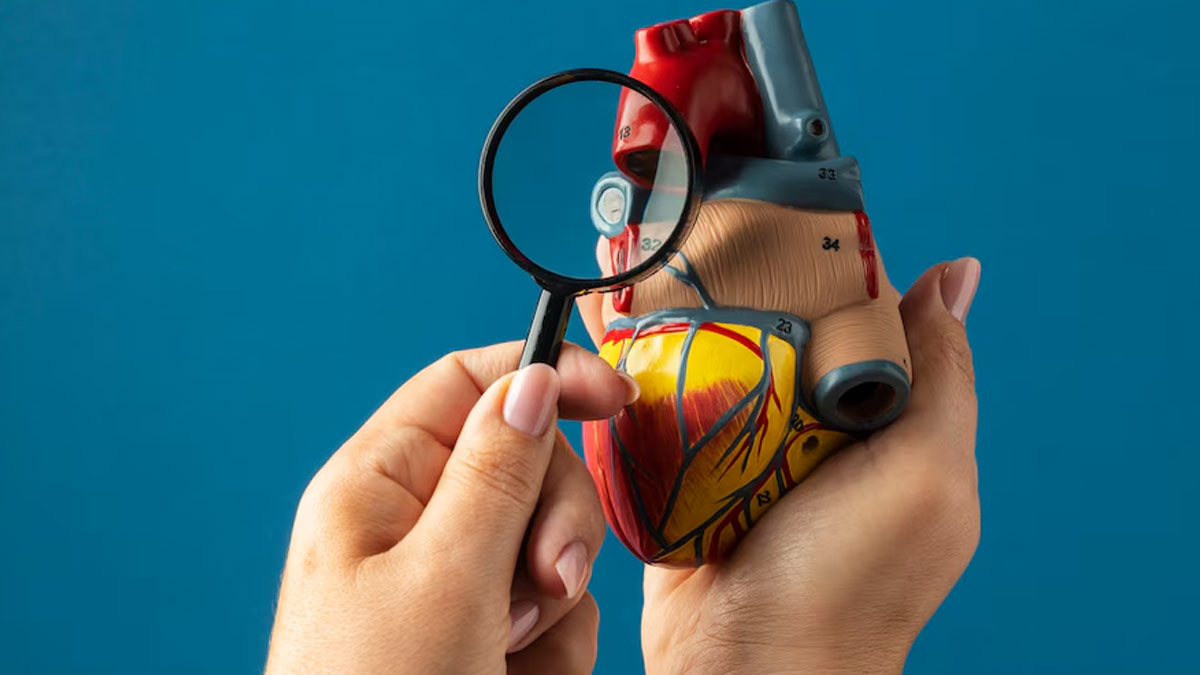
Coronary Artery Disease (CAD) is a heart condition that occurs when the coronary arteries find it difficult to supply enough oxygenated blood to the heart due to cholesterol deposits or plaque buildup.
Table of Content:-
Indians reportedly have the highest CAD rates compared to the global average, with a particularly young onset, according to a 2020 study published in the Medical Journal Armed Forces India. Globally, an estimated 20 crore people are living with CAD, with 11 crore men and 8 crore women dealing with the condition.
When it comes to CAD, people have many questions, but the most common doubt is whether or not it is reversible and can be cured. To find answers, we spoke to Dr L K Jha, Associate Director and Head - Cardiology, Asian Hospital, Faridabad, who shed light on the same.
Also Read: High Cholesterol: Know What Causes Plaque Buildup In Your Arteries?
What Is Coronary Artery Disease (CAD)?

Dr Jha describes CAD as a prevalent kind of cardiac illness.
He explains, "The coronary arteries, which supply the heart with blood, are affected by CAD. In patients with CAD, less blood reaches the heart muscle due to atherosclerosis, a buildup of lipids, cholesterol, and other materials on the arterial walls. This buildup, known as plaque, narrows the arteries."
According to the doctor, the initial problem begins when plaque, a waxy substance, clogs the artery that supplies blood to the heart muscle. This blockage of blood flow may take decades to manifest, but eventually it can lead to heart failure or a heart attack, he adds.
Factors That Contribute To Plaque Buildup In The Arteries

Several factors contribute to the development of atherosclerosis, which in turn increases the risk of CAD. These include:
- High blood pressure, which can damage arterial walls over time and promote the accumulation of plaque.
- Diabetes or high blood sugar levels can harm the artery's inner lining and lead to plaque buildup.
- Consuming a lot of meals high in saturated fats raises cholesterol, which contributes to plaque buildup.
- Family history of familial hypercholesterolemia, a common inherited cholesterol condition.
- Disorders that cause inflammation, like psoriasis and rheumatoid arthritis.
- Older age: plaque accumulation usually begins in childhood and deteriorates with age for most individuals. For men, the risk increases after 45 years of age, and for women above the age of 55.
Also Read: 10 Risk Factors That Could Lead To Coronary Heart Disease
Can Coronary Artery Disease Be Reversed?

Unfortunately, there is currently no cure for CAD.
However, you can definitely stop it from getting worse, says Dr Jha, adding that with enough effort, you might even be able to undo some of the damage.
Some of the measures you can take include:
- Lower your blood pressure by maintaining a healthy weight.
- Exercise regularly
- Eating a balanced diet
- Reduce cholesterol by limiting saturated and trans fats.
- Quit smoking
- Maintain a healthy weight.
- Control diabetes with medication, diet, and exercise.
- Manage stress
- Go for regular check-ups.
Conclusion
CAD is a major health crisis in India. While there isn’t an exact reason behind it, many factors, from age to family history to one’s lifestyle, can contribute to the risk of the condition. Although CAD is not reversible, the good news is that the damage can be controlled and people can still lead a good quality life through a healthy lifestyle and regular heart check-ups. Consult with your doctor about any additional measures you need to take.
Also watch this video
How we keep this article up to date:
We work with experts and keep a close eye on the latest in health and wellness. Whenever there is a new research or helpful information, we update our articles with accurate and useful advice.
Current Version